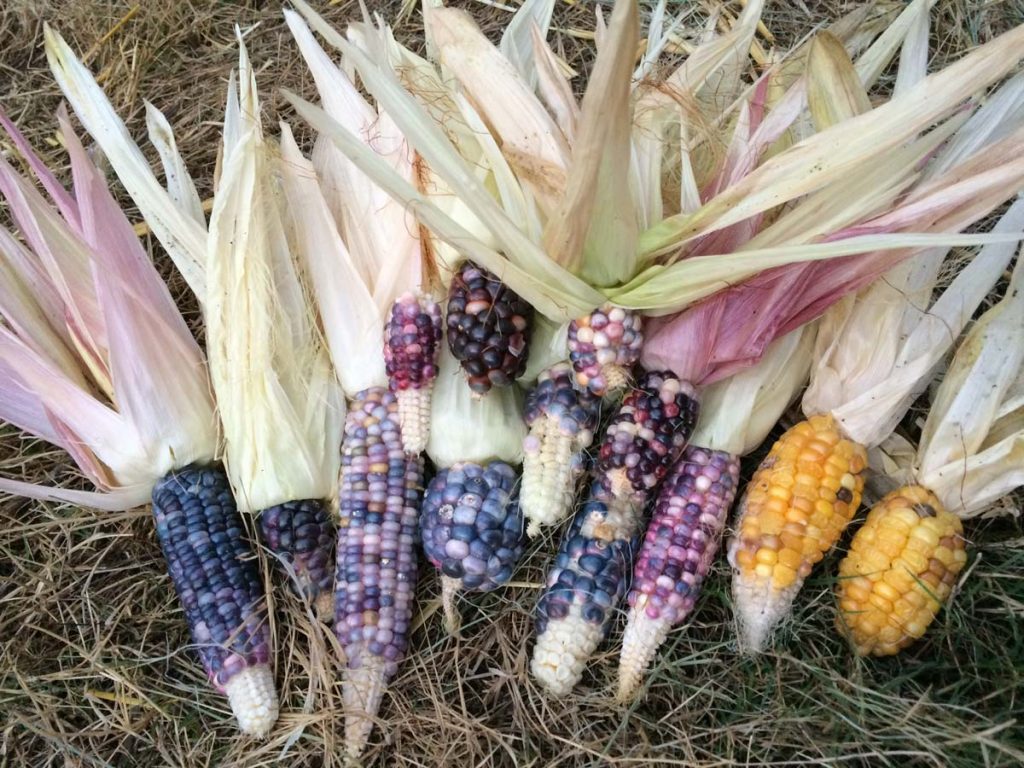If you love decorative corn, you should try growing the variety called “Glass Gem” — the kernels come out in all kinds of wild colors, mixed around on each ear seemingly randomly. They dry well and make a very interesting autumn decoration and conversation piece!
Here are some things to know about growing corn:
- Corn is pollenated by the wind. This means that to get good cobs (cobs that are covered heavily by kernels instead of just sparsely populated) you need to plant corn in blocks — I would say absolutely no fewer than 6 feet by 6 feet square, and bigger blocks than that if you can manage it. Since you’re relying on the wind to push the pollen from one stalk to another, you don’t want to grow them in a single line or grow too few stalks. Trust me, stick to blocks, or you will have some weird looking corn ears without many kernels — I’ve done it before, hehe.
- Don’t do a mixed planting. Corn ears come weird if you plant all different kinds together. This can be amusing, but it can also be really disappointing if you were trying to get some specific results from your corn. For example… one year I planted yellow, blue and glass gem corn together in one block in the garden. The ears came out all mixed colors — take a look at the photo on this post — you’ll see my yellow corn has some pink kernels, my blue corn is purple, and my glass gem corn is pink! 😀 So while this was really funny for me (and the chickens care not what color the corn is) I could really see it being a disappointment. (None of the corn in the picture was any good to eat, by the way.)
- You can start corn in pots or trays! You will be told that you should not start corn in containers and to always sow directly in the ground. That is just not true! I start corn in trays in the greenhouse every year that I grow it and I have a much better result as the squirrels can’t get in the greenhouse to eat the seeds. 😉 Two things that I can tell you about starting corn in containers…
- First, don’t let the plants get too big and then get root bound. Once that happens, even if you put them in the ground, they won’t grow right. I think this may be the main reason why a lot of seed companies warn against starting it in containers.
- Second, do not plan to leave the plants in containers permanently. Corn, since it is wind pollenated, is not going to produce if you just have a few plants scattered around in pots. Corn can also get potbound pretty easy so you’d need a really big pot to be safe. Also, corn gets very big and heavy and a stiff wind is probably going to eventually rush in and topple your plant and your pot right over at some point. Not worth growing it in pots permanently, so please don’t try. 🙂
